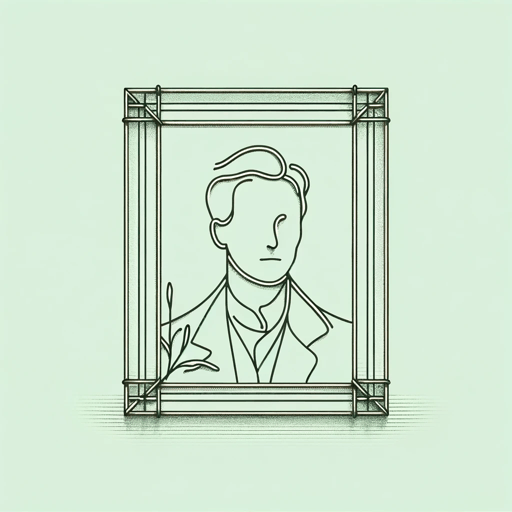36 pages • 1 hour read
Henry JamesDaisy Miller
Fiction | Novella | Adult | Published in 1878A modern alternative to SparkNotes and CliffsNotes, SuperSummary offers high-quality Study Guides with detailed chapter summaries and analysis of major themes, characters, and more.
Summary and Study Guide
Overview
Daisy Miller is a novella by Henry James, first published in Cornhill Magazine in 1878 and in book form a year later. This short piece of fiction explores the differences in class and social expectations in America and Europe, especially for young women just before the turn of the 20th century. James was a member of a prominent and wealthy American family; his education and travels to England and continental Europe allowed him to gain insight into the codes of conduct in various social circles in America and abroad. James rewrote the story as a play in 1883, which was printed in The Atlantic Monthly magazine but never produced as a performance. In 1909, James revised the original story. Most current editions of the novella, however, have chosen to print the original version rather than the 1909 one.
This study guide uses the 2007 Penguin Classics edition of the book.
Plot Summary
In Daisy Miller, Henry James explores the conflicts that can occur when Americans traveling abroad must navigate the rules and expectations of the two cultures. The eponymous Daisy, with her unconventional behavior, ends up clashing with judgmental Americans who disapprove of her while traveling abroad.
Frederick Winterbourne is a young American man who has spent much of his formative and early adult years in Switzerland. He comes to Vevey from Geneva to visit his wealthy aunt, Mrs. Costello. While there, he meets the Millers, a family from Schenectady, New York, who are also wealthy but appear to him to be lacking in manners and social graces. Winterbourne is immediately taken with Daisy Miller, a beautiful young woman whose behavior is unusual to him. She casually spends time with men without a chaperone and Winterbourne cannot decide if she is purposely flouting society’s rules or if she is naïve and ignorant of the rules altogether.
Soon after meeting her, he agrees to take Daisy to see a nearby castle. He is astonished to learn that they won’t be accompanied by her mother or anyone else. His aunt is disgusted by the Miller family and warns Winterbourne against spending time with them. He dismisses her concerns and proceeds to take Daisy, whose mother offered no protest of the trip, to the Chateau de Chillon. Winterbourne continues to be both confused and captivated by Daisy. After their excursion, he tells her that he will be returning to Geneva the next day, but he promises to look for her in Italy when he goes to see his aunt, who has an apartment in Rome, in the winter.
Six months later, Winterbourne arrives in Rome to see his aunt. She tells him that the Millers are indeed in Rome and Daisy’s behavior continues to be the subject of gossip among their social set. He does not immediately try to see Daisy again, but they do meet coincidentally at the home of Mrs. Walker, another wealthy, prominent American woman in society.
Mrs. Walker plans to hold a party and Daisy asks if she can bring her new Italian friend, Mr. Giovanelli. Mrs. Walker agrees but is soon horrified when Daisy says she is going to meet Mr. Giovanelli that evening for a walk. Mr. Winterbourne insists on accompanying her. Daisy walks with both Mr. Giovanelli and Mr. Winterbourne but Mrs. Walker comes after them in her carriage, begging Daisy to get in with her to save her reputation. Daisy refuses and, though Mrs. Walker has already said that Daisy can come to her upcoming party with Mr. Giovanelli, she coldly ignores them when they appear at the party later.
After the party, Mr. Winterbourne spends less time with Daisy and he continues to hear about her frequent outings with Mr. Giovanelli. One evening, he takes a walk by himself by the Colosseum and he sees Daisy and Mr. Giovanelli there together. He knows that people have been getting very sick with something called Roman Fever when spending a lot of time around the Colosseum, so he hurries away. Later, he hears that Daisy has fallen ill with the fever and she soon dies.
Winterbourne spends a lot of time thinking about Daisy, debating whether her behavior was wrong or not, and what could have been done to prevent her death. He speaks to Mr. Giovanelli, who tells Winterbourne that she was “the most innocent,” reinforcing Mr. Winterbourne’s belief that Daisy really was a naïve and innocent girl.
Related Titles
By Henry James

Roderick Hudson
Henry James

The Ambassadors
Henry James

The American
Henry James

The Aspern Papers
Henry James

The Beast in the Jungle
Henry James

The Bostonians
Henry James

The Golden Bowl
Henry James

The Jolly Corner
Henry James

The Portrait of a Lady
Henry James

The Real Thing
Henry James

The Turn of the Screw
Henry James

The Wings of the Dove
Henry James

Washington Square
Henry James

What Maisie Knew
Henry James
Featured Collections
Books that Feature the Theme of...
View Collection
Class
View Collection
Class
View Collection
Community
View Collection
Novellas
View Collection
Required Reading Lists
View Collection
Romance
View Collection
SuperSummary Staff Picks
View Collection
Victorian Literature
View Collection
Victorian Literature / Period
View Collection

